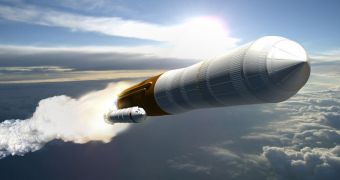Officials at NASA announce that the American space agency has just awarded two new grants for space vehicles that can potentially go to the edge of space.
The agency is seeking to promote interest in this field from private corporations that have an interest in space exploration. The new grants are worth a total of $475,000.
They were awarded to Rockwall, Texas-based Armadillo Aerospace and Mojave, California-based Masten Space Systems, under the Commercial Reusable Suborbital Research Program (CRuSR).
“These two awards are just the beginning of an innovative teaming relationship with industry to provide affordable access to the edge of space while evaluating the microgravity environment for future science and technology experiments,” explains Bobby Braun.
“CRuSR represents the sort of government-commercial partnership that will facilitate near-space access at affordable costs,” adds the expert, who is the NASA chief technologist.
The expert is based at the agency's Headquarters, in Washington, DC. He explains that both the companies recognized for their potential need to demonstrate recoverable launch and testing of small payloads capabilities.
Suborbital flights are performed at altitudes spanning between 65,000 and 350,000 feet (19,800 and 106,000 meters).
“The overall goal of the program is regular, frequent and predictable access to near-space at a reasonable cost with easy recovery of intact payloads,” NASA says in a statement.
“The CRuSR awards will fund two flights this fall and one this winter of Armadillo's Super-Mod vehicle from Spaceport America in New Mexico,” the document reads.
“The first two flights will be to an altitude of approximately nine miles and the third to approximately 25 miles,” it adds further.
Under the new budget proposals that US President Barack Obama submitted at the beginning of this year, NASA is to focus on innovation in exploring space beyond Earth's orbit.
The responsibility for taking astronauts to orbit, and experiments in suborbital flights, is to fall on the shoulders of private space companies, such as the two recently recognized with grant money.

 14 DAY TRIAL //
14 DAY TRIAL //